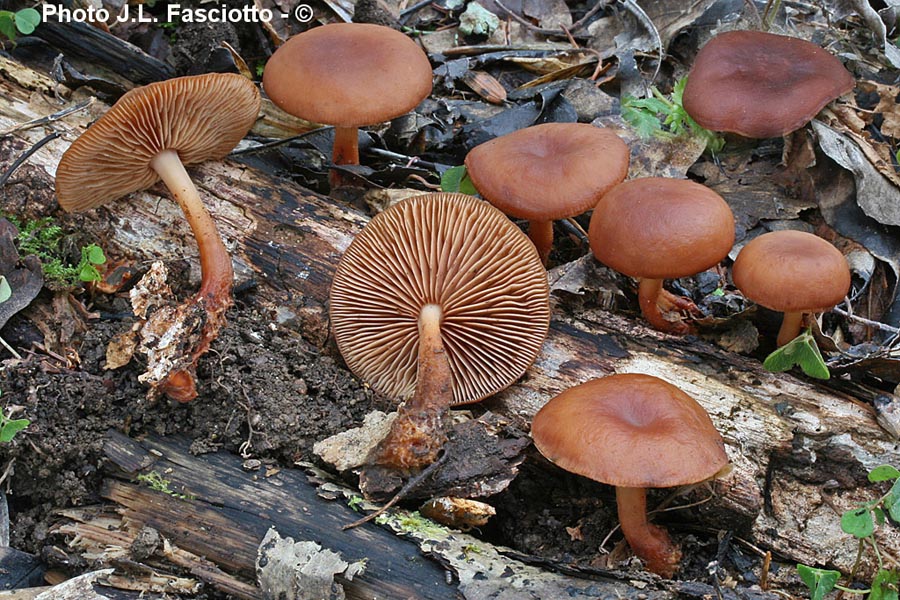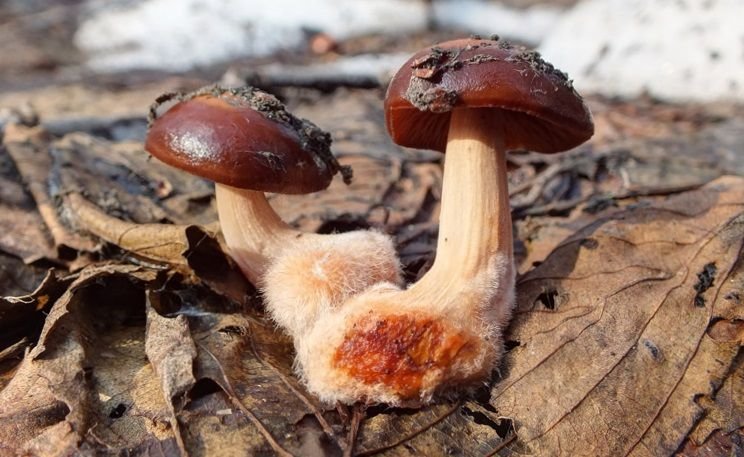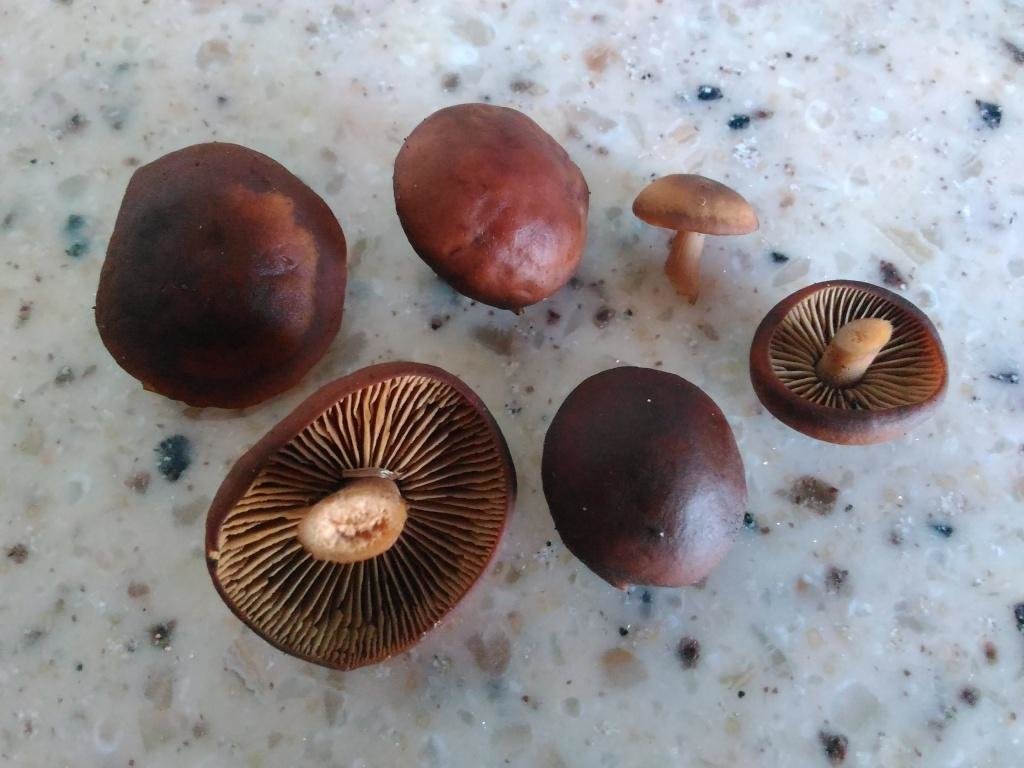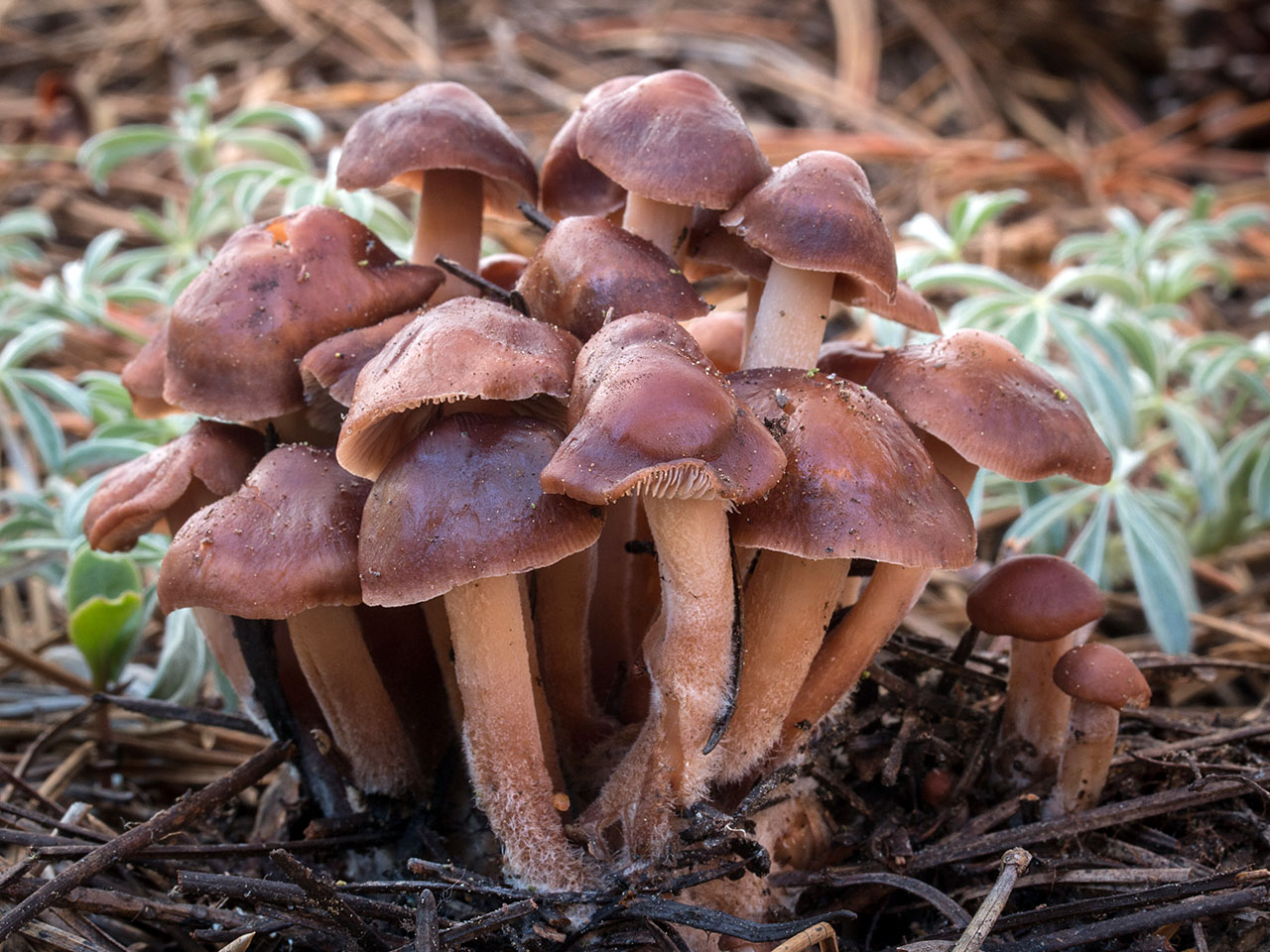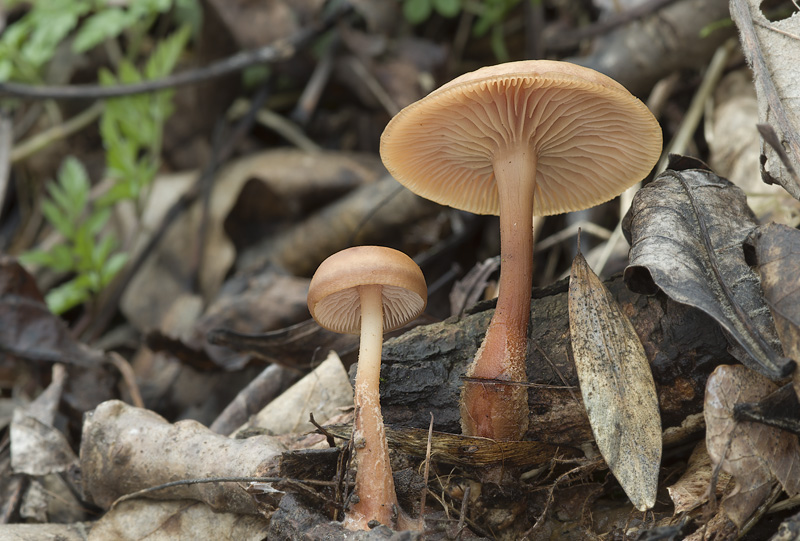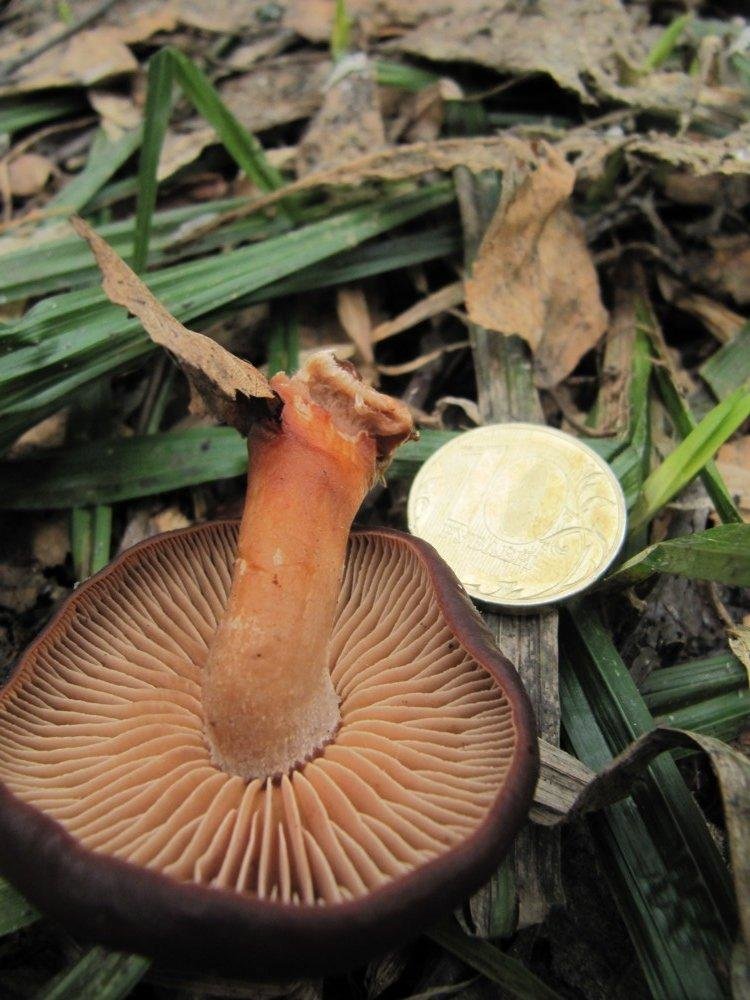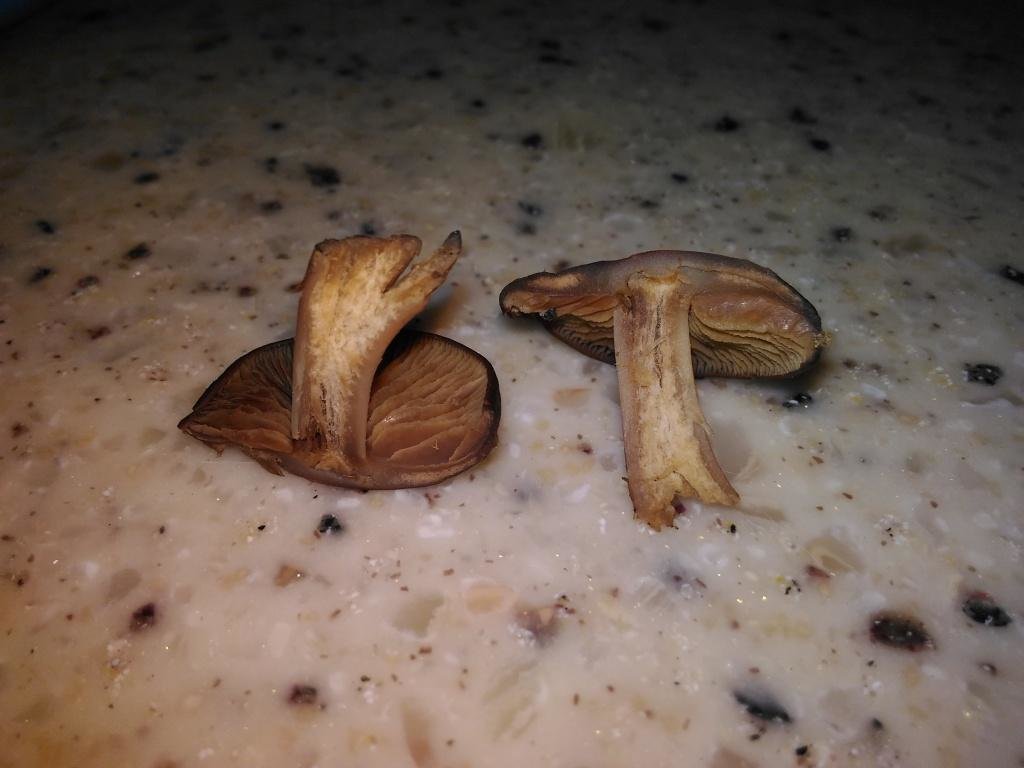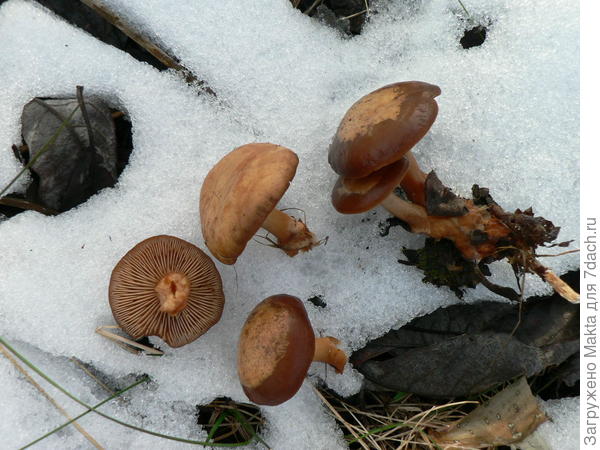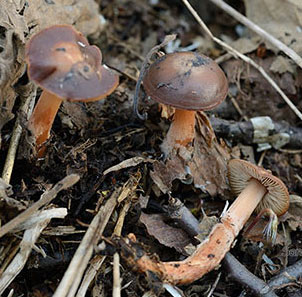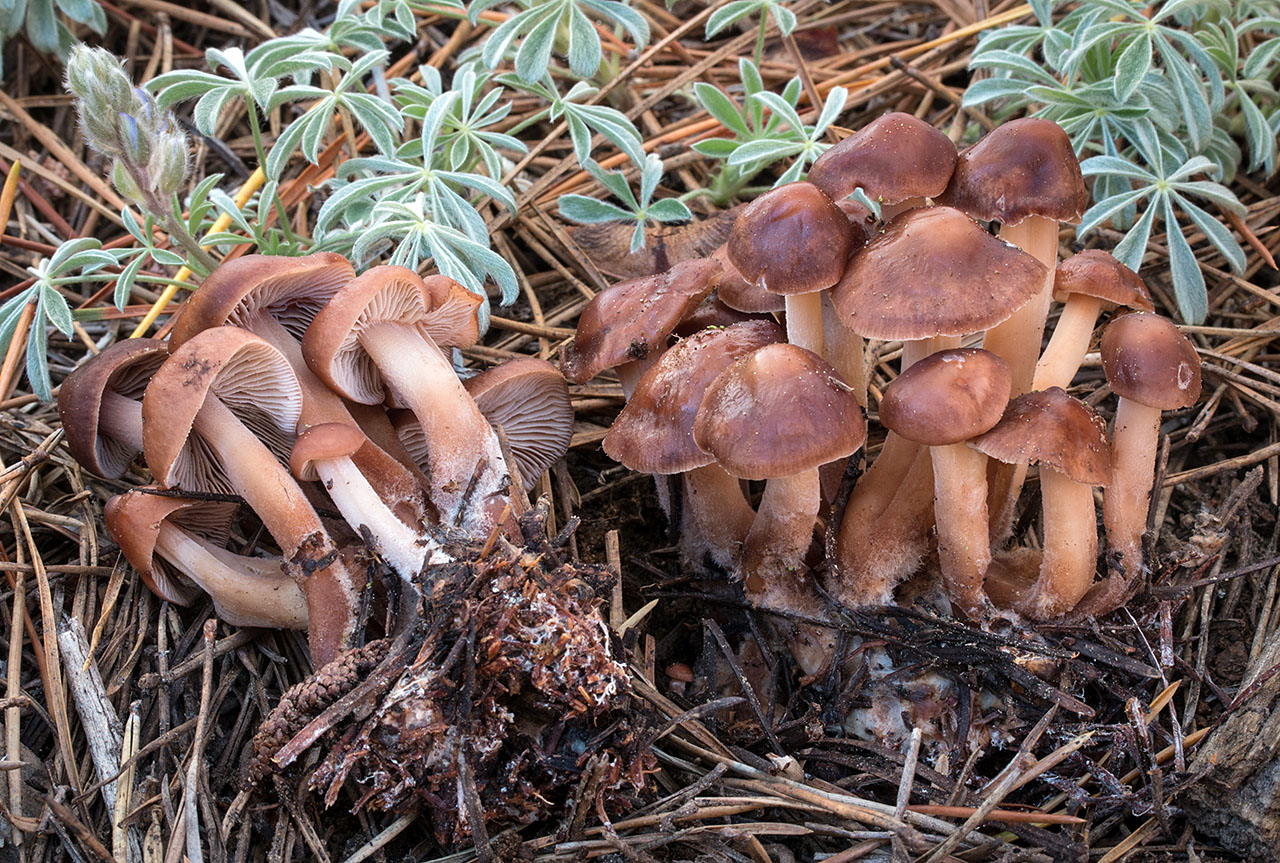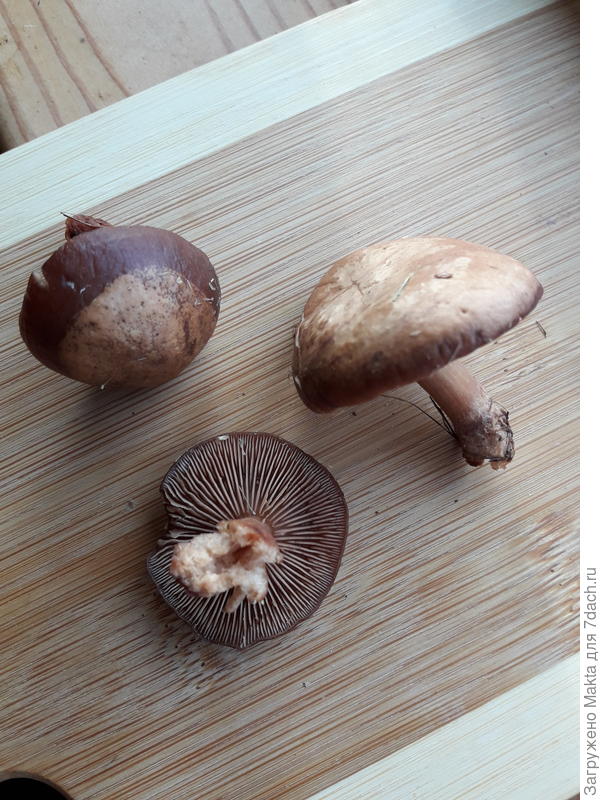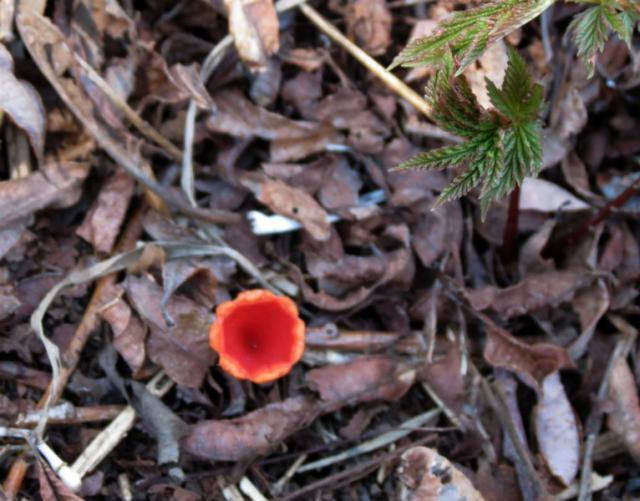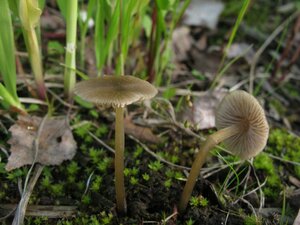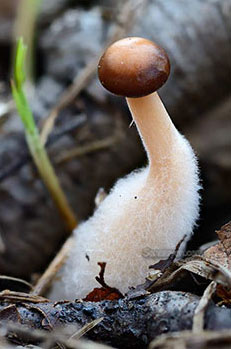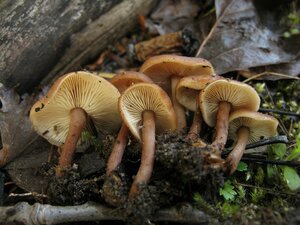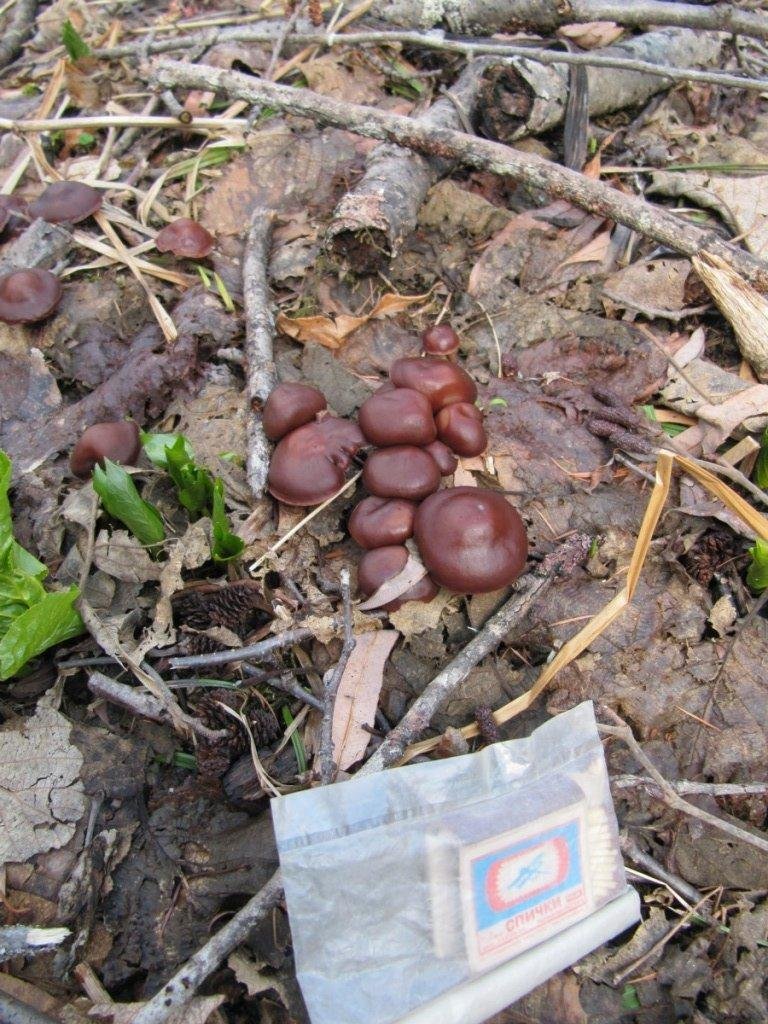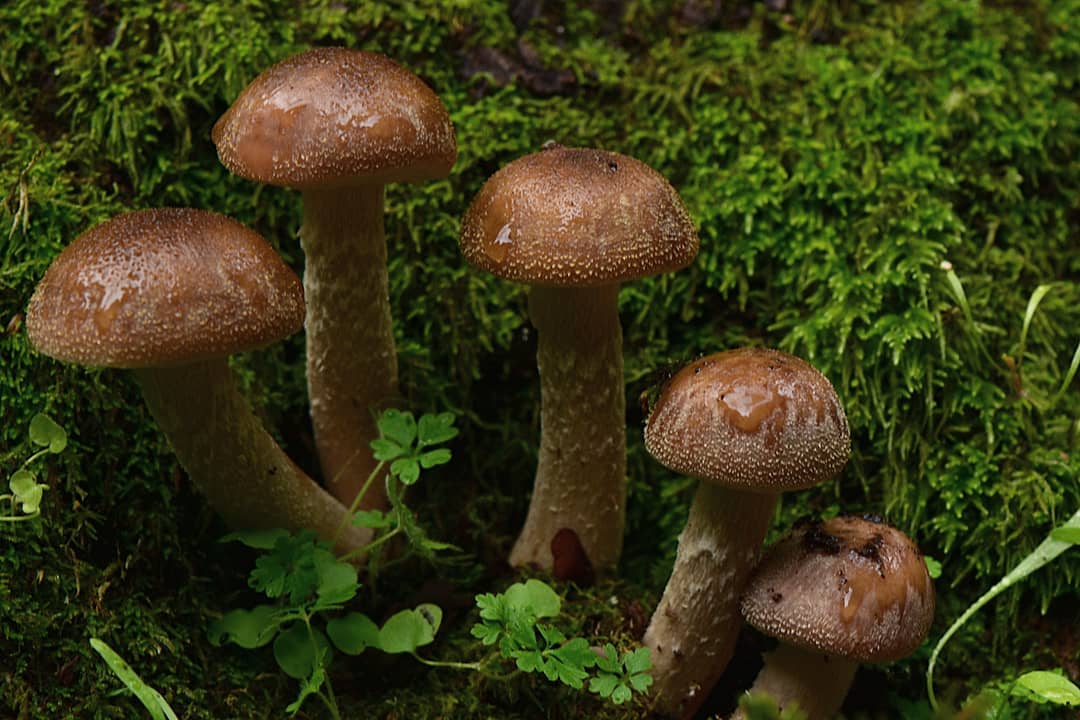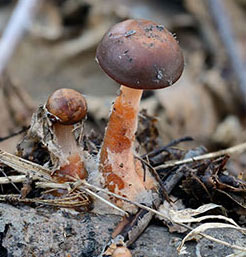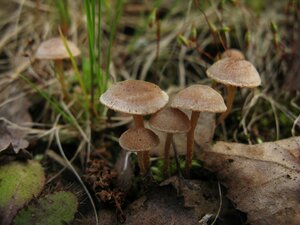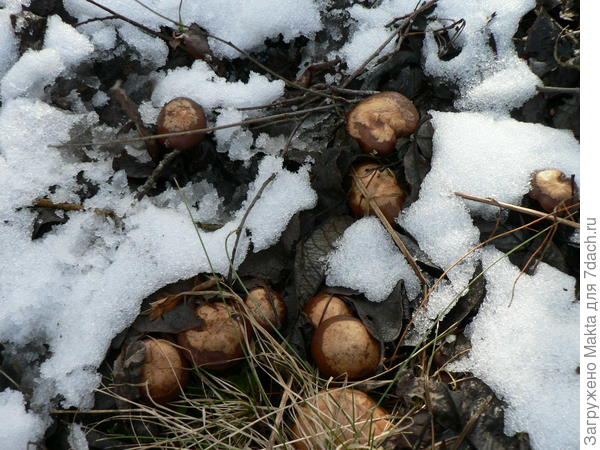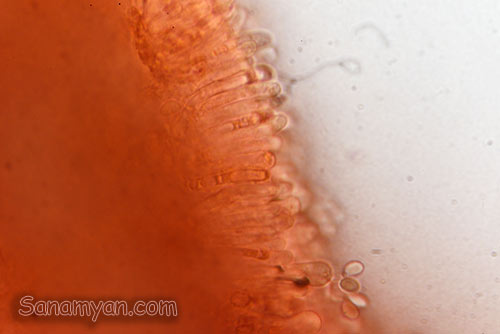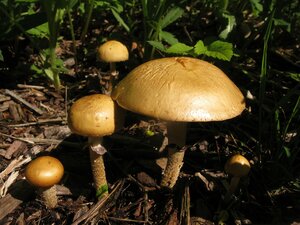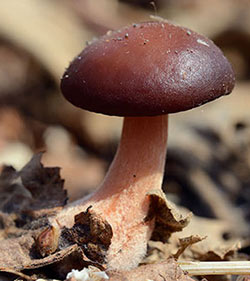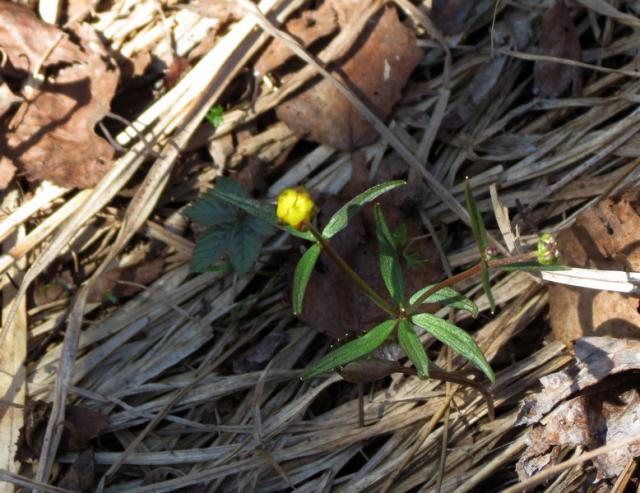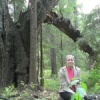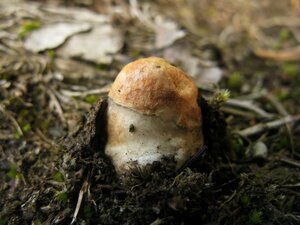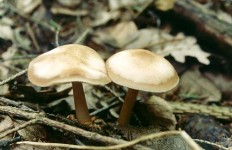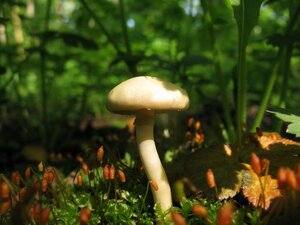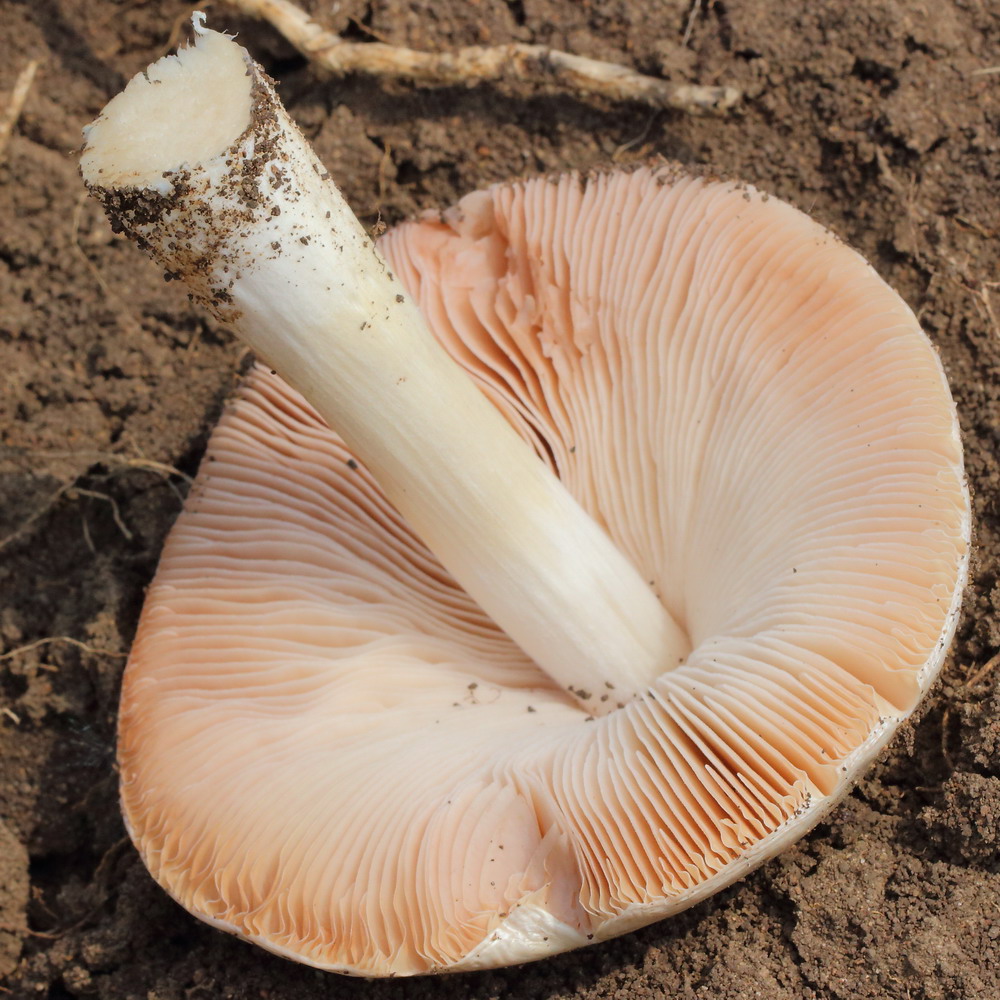Preparation
Colibies can be used for cooking first and second courses, salting, freezing. Usually, only caps are used, since the leg is contaminated with soil. It is best to use early mushrooms. Below are some popular processing options that you can use before eating.
Freezing
- Colibia to clear;
- wash and dry mushrooms on a paper towel;
- put them in a clean bag (if desired, sprinkle with fresh, finely chopped herbs);
- send to the freezer.
The billet can be added to soups, about 20 minutes before cooking.
Salting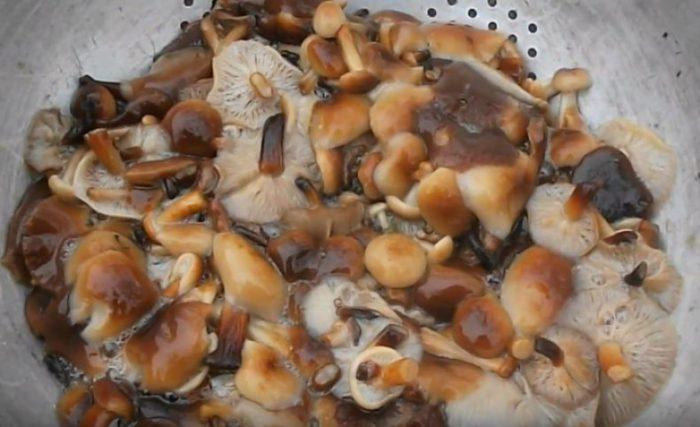
Salted young, small mushrooms. They are used not only as an appetizer, but also added to salads and pies.
- Large caps are pre-cut;
- the mushrooms are thoroughly washed under the tap;
- a little water is poured into the pan, salt is added (for 1.5 liters - 1 teaspoon). Cook for 20 minutes. Stir to avoid burning;
- poured over with cold water and left in a colander (so that excess liquid is glass);
- mushrooms are spread in a clean barrel, in layers. Each of them is sprinkled with spices and pepper, salt (to taste);
- the keg is covered with a saucer and put under pressure (for example, you can use a full can). Cover with a clean towel;
- if the brine is not enough, you can add a little boiled water (chilled). After a few days, foam appears. It is removed, and the colibia is transferred to jars and moved to a cool place;
- after 30 days, the mushrooms are completely ready for consumption.
Frying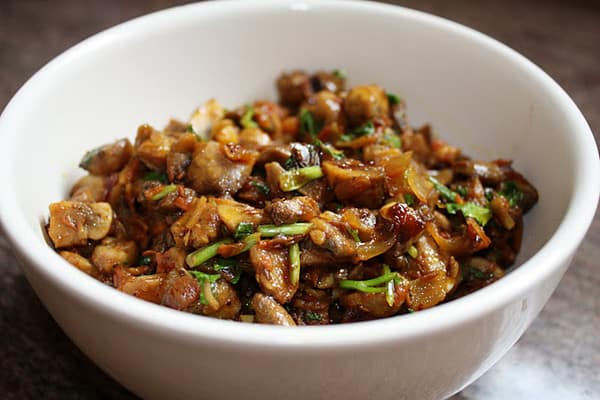
Frying a collibium is easy:
- mushrooms are washed under running water, dried on a paper towel;
- heat the pan, add 2 tablespoons of vegetable oil;
- vegetables are fried: one large onion, carrots (in season, you can add bell peppers);
- after 5 minutes, mushrooms are added to the frying;
- salt (1 teaspoon of salt per 1 kg of mushrooms);
- over medium heat, they are brought to readiness (15-20 minutes).
Hymnopus water-loving
Hymnopus water-loving - Gymnopus aquosus
In another way, such a hymnopus is called the Water-loving Colibia, Watery Hymnopus, Watery Colibia or Water-loving Negnium.
Description
Mushroom cap
In his youth, the Water-loving Negniychnik builds up a convex hat, which eventually opens to a flat-outstretched state with dropped edges. The diameter of the "headgear" ranges from 20 to 60 mm. The hat edge in adolescence is even, later it often becomes wavy.
Hat surfaces are smooth and translucent. They are colored in a pale ocher, yellowish brown, pale brown, ocher, and sometimes orange-cream shade. In rainy weather, the hat absorbs moisture, becoming covered with wet spots or soaked in its entirety and acquiring a dark color.
Inside the caps there is a delicate whitish pulp, which is distinguished by its firmness and elasticity.
Hat bottoms of mature water-loving Colibia are speckled with frequent free plates. In adolescence, the plates grow to the legs in whole or in part. They are pale cream, white or yellowish in color. When spores ripen on them, the plates become richly creamy. Along with long plates, short ones are present in the hymenophore.
The water-loving hymnopus reproduces by elongated, smooth spores in the form of droplets contained in a light creamy spore powder.
Stipe
The graceful leg of Colibia watery reaches 30-80 mm in length and 2-4 mm in thickness. It has the shape of a cylinder, expanding downward and forming a kind of bulb, on which white fluffy particles of mycelium with pinkish or ocher mushroom filaments are visible. The leg is painted to match the color of the hat surface, but it can also be pinkish.
Hymnopus water-loving - Gymnopus aquosus
Growing places
The water-loving iris prefers places with swampy soils or groundwater flowing close to the surface. It is found in conifers and mixed forests with conifers and broadleaf trees.
He takes a liking to any environment - soil with woody humus, wood residues, leaf and coniferous litter, bryozoans, grassy places, bark overgrown with moss.
Depending on the climate, the mushroom bears fruit from the second half of May to the end of November.
Edibility
The pulp of Colibia water-loving has a weak aroma and an almost indistinguishable taste, but some scientific works indicate a sweetish taste of the mushroom.
Gymnopuses of this type are suitable for eating in any form.
Similar types and differences from them
The hymnopus water-loving resembles the following edible and conditionally edible mushrooms:
Colibia wood-loving
They are so similar to each other that it is possible to find the differences between these species only with the help of a microscope.
Colibia yellow-lamellar
It is also difficult to distinguish it from Colibia watery, but there are still differences:
- It has no bulbous expansion at the base.
- Its mushroom filaments are colored not in pink or ocher color, but in an uneven white - ocher: white fragments often alternate with ocher ones.
- It grows in any woodland with rotten wood, often found in lowlands and parks with a soil rich in organic matter, and areas with sparse grass cover.
But, since all doubles are edible, it is not scary to confuse them with a water-loving counterpart.
Description of spring honey agarics
Forest-loving kolibia (Gymnopus dryophilus, Collybia dryophila) mushroom pickers call differently: spring honeydew, oak-loving kollibia, oak-loving kollibia, ordinary money, wood-loving money. According to systematics, it belongs to the Negniychnikov family.
The hat resembles a sphere. Gradually, it transforms into a completely flat shape with a transparent edge. Diameter - no more than 6 cm. Young mushrooms have some similarity with wild apples.
The core of the mushroom is light brown or yellow (rarely white). The color depends entirely on the growing conditions. If you look at the hymenophore, you can determine the age of the plant. The older it is, the more red spots.
The mushroom leg has a thin base, 2 to 6 cm long. The color is similar to the cap. Inside - emptiness. At the end, it is somewhat thickened, due to its thinness, it twists. The structure is fibrous, with cartilage.
Udemansiella root (Xerula radicata)
- Other names for the mushroom:
- Xerula root
- Root money
- Collibia tailed
Synonyms:
The current name is Hymenopellis radicata (according to Species Fungorum).
Udemansiella root attracts attention immediately, it is able to surprise with its appearance and is a very special species. Hat: 2-8 cm in diameter
But, due to the very high leg, it seems that the hat is much smaller. At a young age, it has the shape of a hemisphere, in the process of maturation it gradually opens and becomes practically prostrate, while maintaining a noticeable tubercle in the center. The surface of the cap is moderately mucous with pronounced radial wrinkles. Changeable color, from olive, greyish brown to dirty yellow
Hat: 2-8 cm in diameter. But, due to the very high leg, it seems that the hat is much smaller. At a young age, it has the shape of a hemisphere, in the process of maturation it gradually opens and becomes practically prostrate, while maintaining a noticeable tubercle in the center. The surface of the cap is moderately mucous with pronounced radial wrinkles. The color is changeable, from olive, greyish-brown to dirty yellow.
Pulp: light, thin, watery, without any special taste or smell.
Plates: moderately sparse, growing in places in youth, then become free. The color of the plates as the mushroom matures ranges from white to grayish-cream.
Spore powder: white
Leg: up to 20 cm in length, 0.5-1 cm thick. The leg is deep, almost 15 cm.immersed in the soil, often twisted, has a specific rhizome. The color of the stem ranges from brown at the bottom to almost white at the base. The pulp of the leg is fibrous.
Distribution: Udemanciella root is found from mid to late July. Sometimes it comes across until the end of September in various forests. Prefers tree roots and heavily decayed wood remains. Due to the long stem, the mushroom forms deep underground and only partially crawls out to the surface.
Similarity: The appearance of the fungus is rather unusual, and the characteristic rhizome process does not allow Oudemansiella radicata to be mistaken for any other species. Udemansiella root is easy to identify due to its lean structure, tall growth and powerful root system. It looks like a long-legged Xerula, but the latter has a velvety hat, has pubescence.
Edible: In principle, the Udemanciella root mushroom is considered edible. Some sources claim that the mushroom contains some medicinal substances. This mushroom can be safely eaten.
Notes: Udemanciella root is located at some distance from other types of mushrooms. It is easy to recognize at first glance: a very long leg and a short hat give the impression that nails are coming out of the ground, hammered by someone unknown, it is difficult to call it even a mushroom.
Definitioner
- Basidia (Basidia)
-
Lat. Basidia. A specialized structure of sexual reproduction in fungi, inherent only in Basidiomycetes. Basidia are terminal (end) elements of hyphae of various shapes and sizes, on which spores develop exogenously (outside).
Basidia are diverse in structure and method of attachment to hyphae.
According to the position relative to the axis of the hypha, to which they are attached, three types of basidia are distinguished:
Apical basidia are formed from the terminal cell of the hypha and are located parallel to its axis.
Pleurobasidia are formed from lateral processes and are located perpendicular to the axis of the hypha, which continues to grow and can form new processes with basidia.
Subasidia are formed from a lateral process, turned perpendicular to the axis of the hypha, which, after the formation of one basidium, stops its growth.
Based on morphology:
Holobasidia - unicellular basidia, not divided by septa (see Fig. A, D.).
Phragmobasidia are divided by transverse or vertical septa, usually into four cells (see Fig. B, C).
By type of development:
Heterobasidia consists of two parts - hypobasidia and epibasidia developing from it, with or without partitions (see Fig. C, B) (see Fig. D).
Homobasidia is not divided into hypo- and epibasidia and in all cases is considered holobasidia (Fig. A).
Basidia is the place of karyogamy, meiosis and the formation of basidiospores. Homobasidia, as a rule, is not functionally divided, and meiosis follows karyogamy in it. However, basidia can be divided into probasidia - the site of karyogamy and metabasidia - the site of meiosis. Probasidium is often a dormant spore, for example in rust fungi. In such cases, probazidia grows with metabasidia, in which meiosis occurs and on which basidiospores are formed (see Fig. E).

See Karyogamy, Meiosis, Gifa.
- Pileipellis
-
Lat. Pileipellis, skin - differentiated surface layer of the cap of agaricoid basidiomycetes. The structure of the skin in most cases differs from the inner flesh of the cap and may have a different structure. The structural features of pileipellis are often used as diagnostic features in descriptions of fungi species.
According to their structure, they are divided into four main types: cutis, trichoderma, hymeniderma and epithelium.
See Agaricoid fungi, Basidiomycete, Cutis, Trichoderma, Gimeniderm, Epithelium.
Description of the forest-loving colibia
In young mushrooms, the shape of the cap resembles a sphere, but over time it becomes widespread, flat with almost transparent edges. The diameter of the cap is 2-6 centimeters. Young mushrooms are like apples lying on fallen leaves.
The color of the cap can be reddish and reddish with ocher tint.At the center, the color is darker, and towards the edges it gradually brightens. Old mushrooms acquire a pale ocher color, and young colibi are translucent. At high humidity, the shade of the cap becomes more pronounced, and during drought, the colibia becomes inconspicuous.
Through the transparent edges of the wood-loving colibia, plates are visible, weakly fixed to the base. With age, the mushrooms seem to be covered with rust, red spots and stains form on the inside. The translucent edges are torn.

The stem of the mushroom is thin, slightly bent. Inside, the legs are empty. The length of the legs can vary from 2 to 6 centimeters. The structure of the pedicle is fibrocartilaginous. The shade of the leg matches the cap. Downward, the leg is slightly thickened, while the mushroom looks proportional.
The pulp is formed by frequent thin slices of brown or lemon color, sometimes the pulp can be white. The color of the pulp depends on the age of the mushroom and weather conditions. The pulp strongly absorbs moisture, it is thin and tender. Elliptical spores.
Edibility of spring honey
They are edible mushrooms that can be used in cooking but are believed to have a low taste. If a person suffers from a disorder of the digestive system, then after eating wood-loving colibacia, he may experience intestinal and stomach pains.

Les-loving kolibia is not popular among culinary specialists, since there is little softness in it. In addition, it does not have a rich flavor. There may be little or no smell, or there may be a rotten or mildew smell.
Places of distribution of forest-loving colibia
Autumn mushrooms grow in deciduous and coniferous forests, most often they are found in the European part of Russia. Colibia do not grow in gardens and lawns, therefore they are called wood-loving.
The first mushrooms appear in May and bear fruit until late autumn. They can be found in fallen leaves and on rotting stumps, from which moisture and nutrients are obtained. But they can also settle on the trunks of living trees. Sometimes wood-loving kollibii parasitize on other types of fungi.

Similar species
Newbies among mushroom pickers may confuse collibies with mushrooms. But honey mushrooms are distinguished by a pronounced mushroom aroma and taste. The hats of meadow mushrooms are dense, oval in shape, in old age they become open. There is a tubercle in the center of the cap.
Wood-loving colibia can be confused with other types of colibia, and some of them can be poisonous and pose a danger to human life. Even experienced mushroom pickers are not able to detect the difference, since the differences are noticeable only under a microscope. The only good news is that other types of collibies are very rare.
Related species
A related species of forest-loving kollibia is oily kollibia, this is also a conditionally edible mushroom. The diameter of the cap is 2-12 centimeters.

The pulp is watery, white, without a special smell and taste. Elliptical spores. At a young age, the cap is convex, sometimes there may be a tubercle in the center.
The surface is smooth, becomes oily in wet weather. The color of the cap is brown or red-brown, over time it turns light brown.
The length of the leg of the oil colibia is 2-12 centimeters, with a width of 0.4-1 centimeters. The stem is relatively flat, stiff, smooth, and most often hollow. Spore powder of pinkish, yellowish or cream color.

Snow collibia (Spring hymnopus): photo and description
| Name: | Collibia is snowy |
| Latin name: | Gymnopus vernus |
| Type of: | Conditionally edible |
| Synonyms: | Collybia nivalis |
| Systematics: |
|
Collibia snowy of the family Negniumnikovye bears fruit in spring forests, simultaneously with primroses.The species is also called spring or snowy honey agaric, spring hymnopus, Collybianivalis, Gymnopusvernus.
Description of the Snowy Collibia
Among the numerous genus of Gymnopuses, there are many early spring species that are distinguished by their small size. Outwardly, the mushroom makes quite a pleasant impression, which does not repel lovers of quiet hunting.
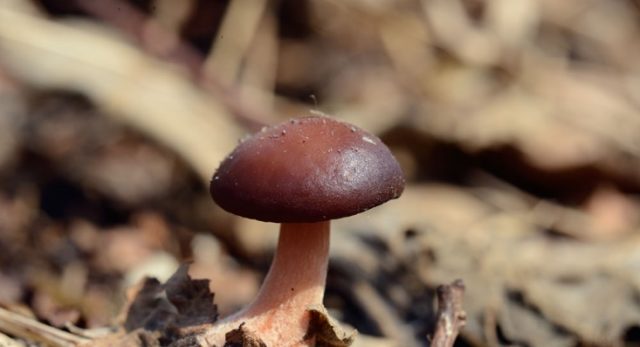
Description of the hat
The diameter of the cap of Colibia sub-snow does not exceed 4 cm. At the beginning of growth, the shape is hemispherical, then with age it is umbrella-shaped, convex in silhouette, or occasionally flat, sometimes with a depressed center. The edges are straight. The peel is recognized by the following parameters:
- reddish brown;
- shiny;
- slippery to the touch;
- brightens as it grows;
- when drying - pink-beige.
The color of the friable fleshy flesh of the snowy colibia is from brown to white. Brownish-cream wide blades are not dense. Representatives of this species have an earthy mushroom smell, after cooking, the taste is mild.

Leg description
Colibia has a snowy leg with the following features:
- 2-7 cm in height, 2-6 mm in width;
- smooth in appearance, but fibers are noticeable;
- clavate, wide below;
- pubescent at the bottom;
- bends slightly near the cap or above the ground;
- contrasting in comparison with the dark cap - pale cream or ocher, the color below is thicker;
- cartilaginous flesh is tough.
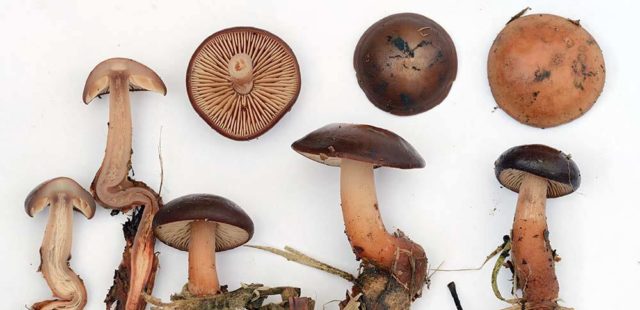
Is the mushroom edible or not
The spring hymnopus is considered conditionally edible, but has not yet been sufficiently studied. Toxins are not present in the fruiting body. Suitable for drying to add mushroom flavor to first courses. Spring colibia is collected only by experienced mushroom pickers, due to the small volume, the species is not popular.
Where and how it grows
Snowy honey fungus is a relatively rare mushroom of the middle lane. They are found in deciduous forests, where alder, beech, elm, hazel grow, on thawed patches. Prefers peat boggy areas with dense leaf litter or dead wood. Groups of spring hymnopuses appear in the first warm days, in April or early May, where the snow has melted. Not afraid of frost.
Doubles and their differences
Snowy colliery seems to be like mushrooms. But you need to know the differences:
- honey agarics have a ring on the leg;
- they appear in summer and autumn;
- grow on wood.
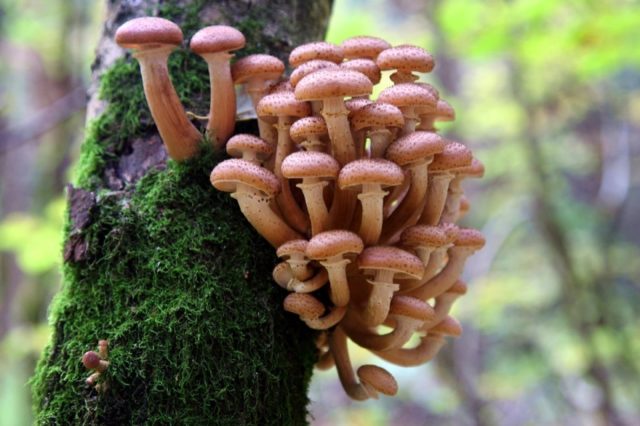
Conclusion
Snowy colliery smells good when finished, it is quite easy to distinguish it, since it appears in the spring. Lovers of the gifts of the forest are not stopped by the small size, but are attracted by the opportunity to feast on fresh mushrooms.




